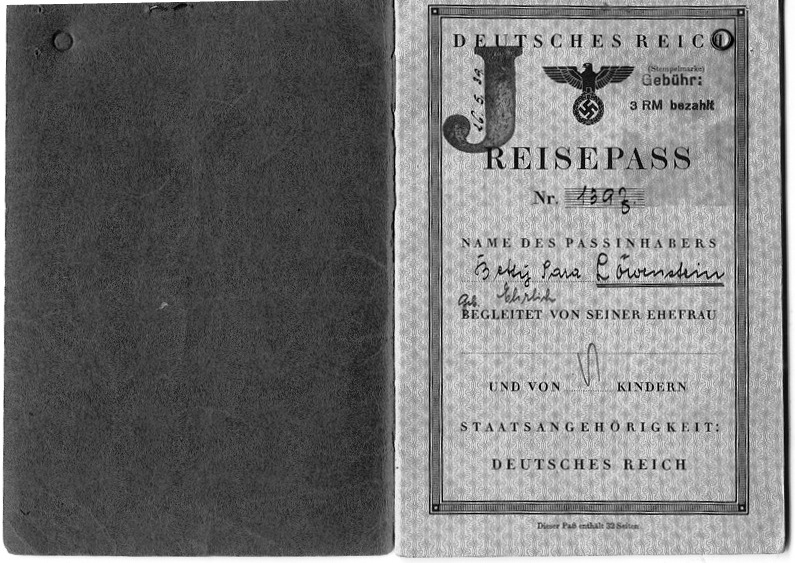The Nuremberg Laws Deprived Jews of Their Rights in Nazi Germany

Maria (right), a 6-year-old girl of the Romanian
Jewish community, wears a yellow Star of David badge bearing the
word "Jude," a symbol of Nazi persecution, along with another girl
during a ceremony at the Holocaust memorial in Bucharest, Romania,
October 11, 2011. About 800,000 Jews lived in Romania before World
War II. Half of them died during the war or were sent to
concentration camps. Only about 6,000 Jews live in Romania
currently, according to official statistics. Photo: Vadim
Ghirda/AP Photo
The Nuremberg Laws were laws that took away the rights of Jewish
people in Germany. They were designed by Adolf Hitler and approved
by the Nazi Party in the city of Nuremberg on September 15, 1935.
The first law was called the Reichsbürgergesetz, or "Law of the
Reich Citizen" in German. The "Reich" was the name for the German
empire. This law took away the Jews' citizenship. The other law was
Gesetz zum Schutze des Deutschen Blutes und der Deutschen Ehre, or
"Law for the Protection of German Blood and German Honor. It
outlawed marriage or sexual relations between Jews and Germans.
These racist Nazi laws were among the first of many that led to the
Holocaust, the mass killing and imprisonment of Jews in Europe
during World War II.
No legal rights for Jews in Hitler's Germany
Under the Nuremberg laws, Jews were not allowed to fly the German
flag. They were forbidden to hire German maids, cooks or other
servants under 45 years old. There were 13 decrees that were later
added to segregate the Jews. The first was made on November 14,
1935. It defined a Jew as a person with at least one Jewish
grandparent. It said that a Jew cannot be a citizen of Germany, vote
or serve as a government official. Before long, Germany made sure
that Jewish passports were stamped with a red "J" for Jude, the
German word for"Jew." Jews were not allowed to swim in public
swimming pools or go to movie theaters. They could not act in
movies. Nazis kicked Jewish children out of public schools. Jews
were forced to take "Jewish" names, like Israel for men and Sara for
women. In the decree of March 28, 1938, Jewish communities lost
their legal rights.

Image 2. German-issued passport of Betty
Löwenstein allowing her to leave Nazi Germany but not to return.
Her middle name was not really Sara: the Nazis gave all Jewish
women the middle name "Sara." Photo: Jonathan Lowenstein
The Nazis defined the Jews as a race. This meant they were
persecuted not because of their religion but because of a racial
identity passed down by their ancestors. Nazis thought Jewish blood
was different than Aryan blood. Nazis later forced the Nuremberg
Laws on countries they occupied. It became a model for the treatment
and eventual murder of the Roma (once negatively called Gypsies),
and other "non-Aryans."
Origins of Germany's "Aryan race"
The theory of an "Aryan race" appeared in the mid-1800s in Europe.
According to this idea, lightskinned Aryans invaded and conquered
ancient India from the north. They were responsible for all the
progress that benefited humanity, and were superior to "Semites"
(Jews), Asians and black people. The Nazis through that Nordic and
Germanic peoples were descended from the Aryans and were the purest
members of the "race." (Nordic people come from Scandinavia.) By the
time Hitler got into power, anthropologists said this idea of an
Aryan race was completely false. However, Hitler and the Nazis made
it the center of their worldview and used it to justify killing
Jews, Roma and other "non-Aryans." Hitler believed that races,
nations, and individuals were not equal. The "Aryan race" was at the
top and everyone else was inferior. Morality and truth, or even
life, were not important on their own. The only thing that was
important was the German people.
Germans vs. Jews: Breaking down the family tree
The Nuremberg Laws divided Germany into Germans and Jews, but did
not say who was a Jew. German officials eventually decided that
there were two basic types of Jews. A full Jew was anyone with three
Jewish grandparents. Part-Jews were called Mischlinge, which means
"mongrels" in German. First-degree Mischlinge were people who had
two Jewish grandparents but did not practice Judaism and did not
have a Jewish husband or wife. Second-degree Mischlinge were those
who had only one Jewish grandparent.
For Germans, it became very important to prove they had non-Jewish
ancestors. This created a new business. "Licensed family
researchers" were hired by anxious Germans afraid of having a Jew in
the family tree.
QUIZ.
- The author mainly explains the importance of the Nuremberg
Laws by _____.
(A) explaining what the laws did
(B) explaining how the laws were made
(C) highlighting the city of Nuremberg
(D) highlighting the people who made the laws
- Which selection from the article is BEST illustrated by the
photograph of the passport?
(A) The Nuremberg Laws were laws that took away the rights of
Jewish people in Germany.
(B) It defined a Jew as a person with at least one Jewish
grandparent.
(C) Jews were forced to take “Jewish” names, like Israel for men
and Sara for women.
(D) This meant they were persecuted not because of their
religion but because of a racial identity passed down by their
ancestors.
- Use the photograph of the passport and information from the
article to select the TRUE statement.
(A) The Nazis allowed Betty Löwenstein to leave Germany and
return when needed.
(B) The Nazis believed it would be better for Jews if they were
forced to leave Germany.
(C) The Nazis cared mostly about Jewish people having Jewish
names.
(D) The Nazis wanted it to be clear on a passport that the
person was Jewish.
- What is the MOST likely reason the author included the
information about Mischlinge?
(A) to show first-degree Mischlinge were different from
second-degree Mischlinge
(B) to show grandparents are important in a person's ancestry
(C) to show it was difficult for Nazis to figure what it meant
to be Jewish
(D) to show it was difficult to figure out what it meant to be
German

